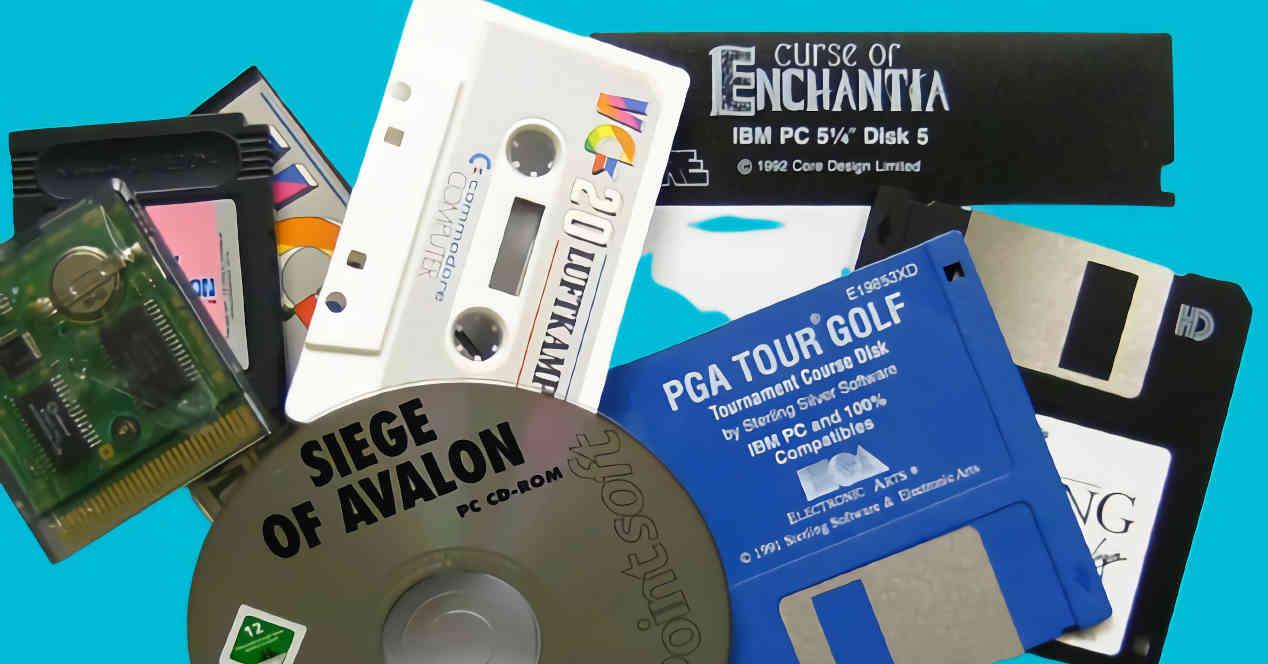Information storage systems have been with us since the dawn of computing, after all a computer is responsible for handling information stored on a medium that is stored, which we call memory. That we divide into two different groups.
The first of this type of storage is what is called volatile memory, it is called that because although it is much faster than non-volatile memory, it loses information as soon as it is no longer powered. into electrical energy. This leads to the need to use persistent or non-volatile storage systems, which retain information even after being turned off, also known as persistent storage systems.
At first it was the tape …
Cassette as a music storage format has been around since 1962 and already in the 1970s when the first personal computers appeared, it became the preferred storage format for storing programs. The reason is that it was excessively cheap compared to other formats.
Back then, the fastest storage memory was ROM, but not everyone had access to its mass production, and it couldn’t be rewritten. The custom was therefore to use a tape recorder connected to an audio mini-jack, in which the data was transmitted at a fairly slow speed.
The problem with cassettes is that it was a sequential storage format in which specific data could not be accessed. Users therefore had to dump the contents of the cassette in to the system’s RAM in order to use it. A process that was tedious and required that early home computers needed a large amount of RAM.
… And the ROMS
ROMs, on the other hand, were used to store the computer’s operating system, which was once extremely simple and contained a BASIC interpreter with a series of commands to manage it. Operating systems were not included in the tapes due to the inability to support random access to memory. In addition, part of the memory addressing of computers was formerly occupied by the operating system stored in the computer’s ROM.
Another use of ROMS was to store programs, although in order to function they required the computer to use RAM memory to store temporary variables, they became an option for early computers and video game consoles for the purpose save the cost of the main unit. . Although the fall in the price of RAM in 1983 resulted in the gradual disappearance of ROMS, its biggest advantage was that the speed of accessing its data at that time was as fast as RAM and for years it continued to be. be used, at least until the standardization of hard disks
The appearance of the floppy disk as persistent storage
The next persistent storage format to be standardized was floppy or floppy disk. Which was first standardized on the Apple II disc created by Steve Wozniak months after the release of the Apple II.
What gives a floppy disk over a cassette tape when it comes to storing data is that it is organized in the form of a disk. Hence its name flexible disc, where its last name is due to the fact that it is formed of a piece of plastic surrounded by a magnetic material. The advantage is that the data tracks are not placed sequentially but in concentric discs, which greatly facilitates switching from one track to another, allowing random access to the data.
The format chosen for the Apple II floppy disk drive was the 5.25-inch floppy disk, and it offered tremendous performance compared to the competition. Programs took much less time to load, and with support for random access, they could be used as memory for programs and stored in user-created data files. Benefits that drove the entire enterprise market to adopt this format and came standard with the first IBM PC
Its storage capacity? Barely 160 KB of information, but it was much more than what could be stored in the RAM of a system of the time, however the floppy disk would undergo an evolution which would further increase its storage capacity, as well as its portability. .
The 3.5 inch floppy disk
In the generation of 8-bit computers, the cassette became what separated low-cost personal computers from those designed for the professional market, but already in the 16-bit computer things changed and 3.5 floppy disks inches have become standardized. Since then, these have come to be the standard for many 16-bit systems, not just the PC, although each has its own different file system.
Thus, the 3.5 inch floppy disk, derived from a SONY design, was used not only by the PC, but also in systems such as the Commodore Amiga, Atari ST and Apple Macintosh. This is due to its standardization thanks to its reduced size and the fact that it can store up to 720 KB of memory per disk.
At the end of the Eighties appears the second version of the standard which uses the modulated frequency to double its quantity of data. From 720 KB to 1440 KB or 1.44 MB. Format which was the last standard format on PC, despite the existence of formats like Iomega’s Zip, which offered 100 MB of persistent storage, but has never been standardized .
The hard drive, the storage format persists older
If there is one storage system that has survived all this time, it is the hard drive. Where, as with floppy disks, its origin goes back well before the appearance of the personal computer. Specifically, in a unit as large as a room called the IBM 350 and dubbed by Big Blue as RAMAC, an acronym that stands for Random Access Method of Accounting And Control. His capacity ? Only 5MB of storage despite disks as big as a refrigerator.
The first IBM PC launched in 1983 did not carry a hard drive, we owe this honor to the PC XT, which was an improved version of the first IBM PC, where the 8088 had been replaced by an 8086 and a Standard hard drive with a capacity of 10MB, an innovation that gave IBM the professional market of the time, because the hard drive not only offered a persistent and bulky method for the time, but also fast enough to be able to do without the ROMS which included the first systems.
Since then, the hard drive has been an integral part of the PC and although solid memory formats have emerged recently, the low cost per stored byte means that it continues to be used today even after 30 years.
Hundreds of MB of persistent storage with CD-ROM
The optical format was originally intended for storing and playing music. Its biggest advantage was that it allowed the greatest amount of information to be encoded without data loss, and any track could be chosen directly. The Compact Disk has become the musical standard in its own right. Without the vinyl wear problems.
CD-ROM, which was the data version of the Compact Disk, first appeared as standard in 1984, but it took years to standardize it for a variety of reasons. The first reason was the inability to write data because it is a read-only format. The second was that the first units were massive in size and the third was that there weren’t any processors powerful enough to take advantage of them.
CD-ROM drives use a laser to read the binary data encoded on the optical disc. Through the use of the laser, it is possible to store the data using very little space compared to other reading methods, which means that they have a large amount of information per area compared to
Its standardization took place in the 90s, when the storage capacity of floppy disks became a nuisance. The most veteran of the place will remember installing not a few, but dozens of floppy disks to complete an installation. Over time, CD-ROM drives became standardized and their cost ended up being so low that all PCs had one.
DVD, the ultimate commercial persistent storage drive
The Digital Video Disk, later known as the Digital Versatile Disk. was born to solve one of the problems of CD-ROM, the ability to store an entire movie of good quality in order to replace VHS tapes.
This was achieved by using a narrower type of laser, increasing the storage capacity from 650MB to 4700MB for its single-layer version and 8.5GB for the two-layer version. This has led console and PC video games to finally adopt this format as the standard for years. Your disappearance? This is due to the emergence of content distribution over the Internet and the network of networks has become the largest persistent storage system in the world.
DVD had a successor in the form of Blu-ray, which had 25 GB discs, but in exchange for a very slow access speed. Because of this, its version for data never took off as a storage format. The Internet had become a more convenient technology, both for storing programs and data for the user.
Table of Contents















